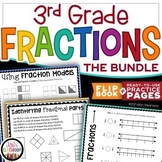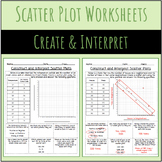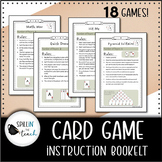41 results
Middle school geometry laboratory microsofts
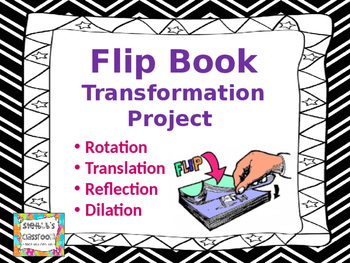
Flip Book Transformation Project
Students create a flip book using Power Point to discover and/or apply properties of geometric transformations. The student handout provides detailed instructions on how to create the flip book which includes using the “duplicate slide” feature in Power Point. Students are required* to create a minimum of 10 slides with 4 different movements. Students are given the opportunity to choose what type of movements they use within given parameters. This choice provides the opportunity for great di
Grades:
7th - 10th
Types:
Also included in: Transformations Bundle
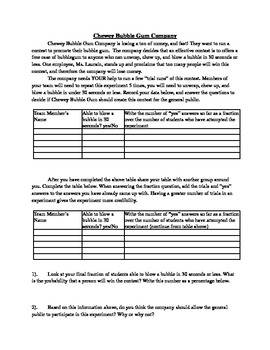
Chewey Bubble Gum Company - Intro To Probability
Want to introduce your students to the probability of something happening? Want to peak their interest before you start a probability unit? This experiment based activity allows students to find the probability of something happening while having fun and popping bubble gum bubbles!
Subjects:
Grades:
6th - 12th

Triangle Classification Lab
Students will use Exploragons to construct triangles and to identify the triangles as acute, right, or obtuse and equilateral, isosceles, or scalene. It also emphasizes that the angle sum of triangles is 180 degrees.
Subjects:
Grades:
5th - 7th
CCSS:

Clinometer Discovery Lab (Using Trigonometry)
I gave this project to both geometry and PreCalculus students. I gave them specific directions (included) on how to make a clinometer, but taught them nothing else about how to use them. They had to figure out how to use trigonometry to find the height of some objects in our commons (on a nice day, it would be awesome to go outside). Students used a lot of trial and error, and found how important it was to have an accurate diagram. I checked in frequently with each group-common errors included n
Subjects:
Grades:
8th - 12th
Types:
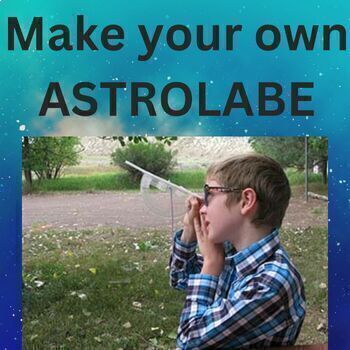
Astronomy Astrolabe Lab Middle School Science
Essential QuestionHow did early astronomers measure the stars and planets?Combine Math and science in your classroomI begin this lab by asking students who is the most important on a Pirate ship. They tell me it is the Captain and inform them that is the wrong answer. The navigator is because he knows your location and where the buried treasure is located.MaterialsPlastic protractor with a holeLarge plastic straw12-inch piece of stringSmall bolt or washer (or other metal weight that can be tie
Subjects:
Grades:
8th - 10th
Types:
NGSS:
MS-ESS1-3
Also included in: Astronomy light, planets sizes , space rocket and sun tracking
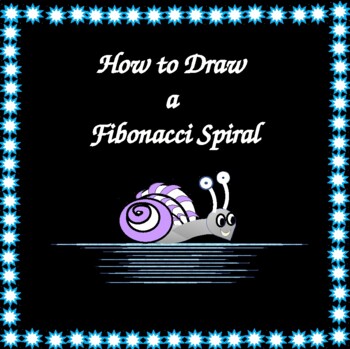
Math Lab How to Draw a Fibonacci Spiral and DISTANCE LEARNING/NO PREP
I am absolutely excited to share the following Math Lab that teaches students how to draw a Fibonacci Spiral!* This lab is an outstanding way to open any lesson or unit on sequences!* Leonardo Fibonacci is introduced and it is explained to students how the sequence got its name.* Students are given examples of the Fibonacci Sequence as it appears in nature and in architecture.* A list of materials required to complete this lab is provided in the lab.* Students follow well-defined steps to
Grades:
5th - 12th, Higher Education, Adult Education
Types:
Also included in: BUNDLE: Draw the Fibonacci Spiral, Fibonacci in Nature, Golden Ratio
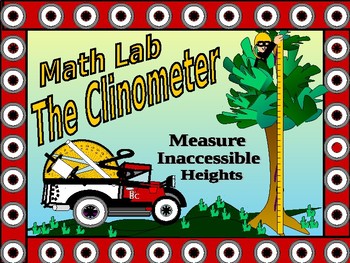
Math Lab: The Tangent Ratio, a Clinometer, and Inaccessible Heights
The following math lab is a follow-up to lessons on the Trigonometric Ratios:* In the lab, students follow steps to create a measuring device called The Clinometer* Students use the Clinometer to measure objects of inaccessible heights such as trees or flag poles.* To measure the objects, students use their Clinometer and apply the Tangent Ratio.* Students work with a partner. * One partner looks through the Clinometer while the other partner records the data required to calculate the tange
Subjects:
Grades:
7th - 11th, Higher Education, Adult Education
Types:

Polygon Interior Angle Sum Theorem Investigation
Students are given 4 polygons and asked to divide them into triangles. They then find the interior angle sum by multiplying the number of triangles by 180. The students will use their findings to derive the formula for the sum of the angles in any polygon.
Grades:
7th - 12th
Types:

Geometry Lab for Start of School - Measuring Line Segments with Candy and Rulers
Looking for a new way to start off the year teaching Geometry? For a change of pace, rather than read the rules to the kids on the first day I decided to give them this activity instead.
Supplies Needed: Notecards, paperclips, Starbursts, rulers,
This is essentially a printable/editable packet with 6 different line segments that the students will measure using 6 different units of measurement. I chose 3 non-traditional units (notecard, paperclip, Starburst) and traditional units (Inches,
Subjects:
Grades:
5th - 11th
Types:

Surface Area & Volume of Oblique Prisms: Student Investigation
In this investigation, students will use raw spaghetti and mini marshmallows to discover how the surface area and volume of a prism relate to the surface area and volume of the respective oblique prism. Students will be asked to create a rectangular prism using marshmallows to connect the vertices. Using a ruler, they will measure the dimensions of the prism, calculate and record the surface area and volume. Then they will make their prism into an OBLIQUE prism by giving it a slight push to t
Subjects:
Grades:
6th - 10th
Types:
CCSS:
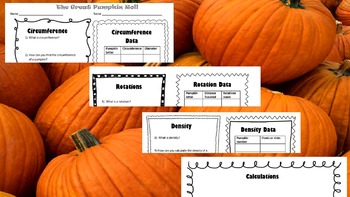
Pumpkin Roll Math Lab
Want to get outside and investigate pumpkins?
Real-life application of skills are really important to students making connections to math skills in the classroom. This lab covers both math and science skills of circumference, diameter, rotations and density. It does require an outdoor space such as a blacktop or track or a long hallway.
* I did not buy the pumpkins that I used. I sent out an email to parents and told kids about it in class. All pumpkins used were donated!
Subjects:
Grades:
6th - 8th
Types:
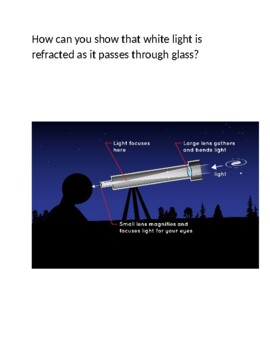
Astronomy Telescope Refraction of light
STEM This lesson contains 2 quick labs for students to understand the basic principle of optical astronomy. This fun lesson begins with aq discussion of visible light. The properties of refraction are defined. Then plications of these properties are applied to describe how refracting telescopes operate. There is a math problem to illustrate the importance of finding the radius of a circle.Worksheet and answer key are included.MS-PS4-2Develop and use a model to describe that waves are reflect
Subjects:
Grades:
7th - 9th
Types:
NGSS:
MS-PS4-2
Also included in: Astronomy light, planets sizes , space rocket and sun tracking
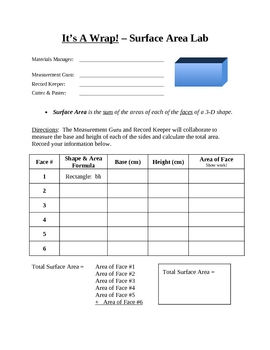
Surface Area Lab
This surface area lab helps students understand how we find the surface area of rectangular prisms.
Subjects:
Grades:
4th - 11th
Types:

Scale Drawing Lab: School Supplies
In this lab, students will measure the lengths and widths of five school supplies, and their desk. The document is editable so you can change the type of school supplies that you have readily available in your classroom. Students measure the dimensions in inches, and record the measurements on the given table. Then, they use the scale factor or 2 in: 3 units to convert inches to graph paper units. Once they have the units, they can create a scale drawing on graph paper of their desk covered in s
Subjects:
Grades:
7th
Types:
CCSS:
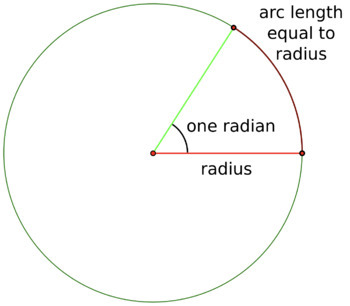
Physics Laboratory Activity: The Radian WITH SOLUTIONS
The editable laboratory activity will give students hands-on experience to see the relationship between radians and degrees of a circle. Physics and math students alike will enjoy this fun and engaging activity while they examine the concept of the radian. Solutions are included!
Subjects:
Grades:
8th - 12th
Types:
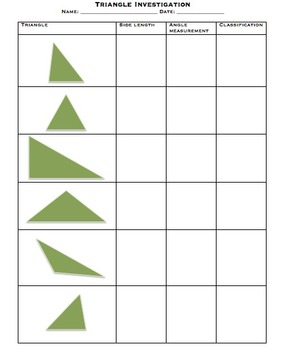
Triangle Investigation
This is handout/worksheet/table that could be done in groups, partners, or a whole group setting. Students will measure angles and sides to discover how triangles are classified. You can teach them the 6 different types of triangles before or after. This investigation is good for a math inquiry lesson.
*Because I upload my items as word documents, the formatting changes. If you are not able to fix this, please let me know, and I can provide a pdf version of the file.
Subjects:
Grades:
5th - 10th
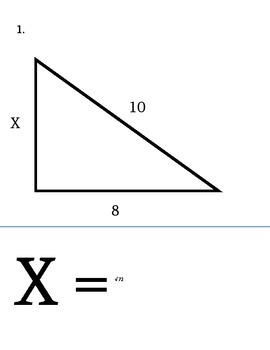
Pythagorean Theorem Activity, Stations, Geometry, Scavenger Hunt
Instructions
Possible Uses:
• Mid-lesson or End of Lesson Check for understanding
• Math Stations (Middle School students like it this way)
• Test Review
• Homework Alternative Bell Work
• Bell Work
Directions for instructor:
This activity is designed to help students work problem with Pythagorean Theorem using algebra and it gets students up and about. Place the 14 cards on the wall around your room. Students pick any card to begin with. They write an equation, then solve for x. Next, the s
Grades:
6th - 10th
Types:
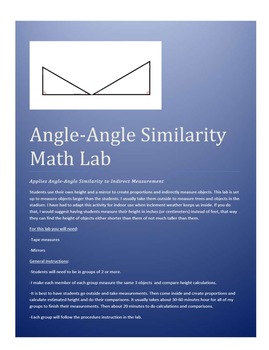
Angle-Angle Similarity Lab
This lab uses angle-angle similarity to indirectly measure objects. By Function Junction.
Subjects:
Grades:
8th - 11th
Types:

Length, Volume, and Mass
This unit describes the standard units for length, volume, and mass in the metric system, as well as conversions between units within both the metric and English systems. It includes activities and assignments that strengthen student understanding of the simplicity of the metric system and its foundation on the powers of ten.
Subjects:
Grades:
7th - 8th
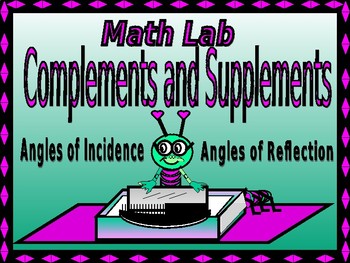
MaLab Complementary and Supplementary Angles from Light Rays/DISTANCE LEARNING
Students have a great time with this lab learning about complementary and supplementary angles as seen through the following activity using light rays!
* Students begin the activity by defining Complementary and Supplementary angles
* Students observe light traveling in straight, parallel lines through the teeth of a comb
* Students learn about angles of incidence and angles of reflection using light, the comb and a mirror.
* Students calculate the complements and supplements to the ang
Subjects:
Grades:
8th - 12th, Higher Education, Adult Education
Types:

Math Lab: Investigating Volume/DISTANCE LEARNING/NO PREP
In the following lab, students enjoy a "hands-on" activity to learn the reasoning behind the formulas used in calculating for volume in two solids, the pyramid and the prism.
* Students draw the nets on poster board for a pyramid and a prism, given precise measurements.
* Students carefully cut the nets out and fold according to directions.
* Students use unpopped popcorn, uncooked rice, or dried beans to fill their solids.
* Students compare the volume of a pyramid and a prism with
Subjects:
Grades:
7th - 12th, Higher Education, Adult Education
Types:

Virtual Surface Area Scavenger Hunt
8th Grade Texas Standards
(7) Expressions, equations, and relationships. The student applies mathematical process standards to use geometry to solve problems. The student is expected to:
(B) use previous knowledge of surface area to make connections to the formulas for lateral and total surface area and determine solutions for problems involving rectangular prisms, triangular prisms, and cylinders.
*Students will click on multiple links to take them to a real world rectangular prism, triangular
Subjects:
Grades:
8th
Types:
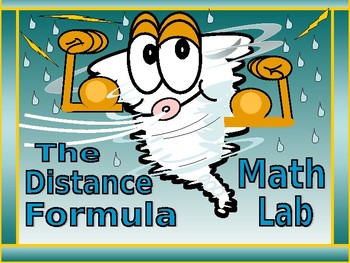
Math Lab: The Distance Formula/DISTANCE LEARNING/NO PREP
I am extremely happy to offer the following math lab on The Distance Formula!
* Students are instructed to use their imagination and chart the path of a tornado that picks up a house in the New Orleans area and puts it down in the southern Florida area.
* The longitude and latitude coordinates of the tornado's path are provided on a table
* A tracking map is provided for students to transfer the data from the table to the map.
* Students calculate the distance between the starting po
Grades:
7th - 12th, Higher Education, Adult Education
Types:
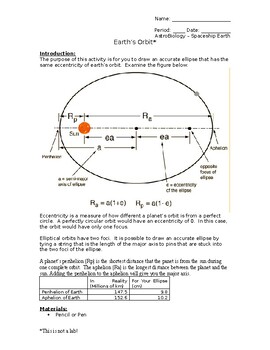
Drawing Earth's Orbit
In this activity, students will use thumbtacks, cardboard, and string to draw earth's elliptical orbit. This is a useful lesson for talking about the scale of space and connections between math and science
Subjects:
Grades:
6th - 12th
Types:
Showing 1-24 of 41 results

